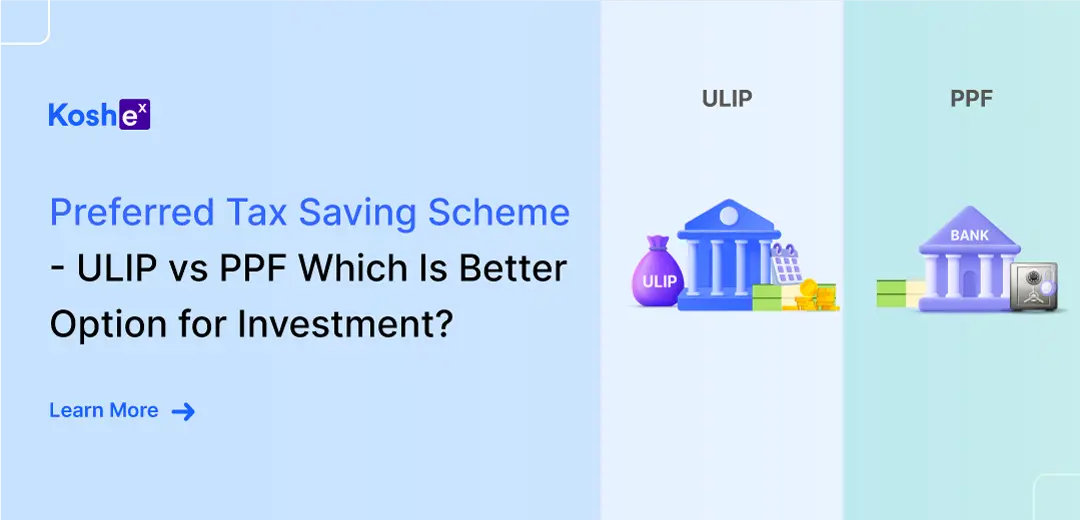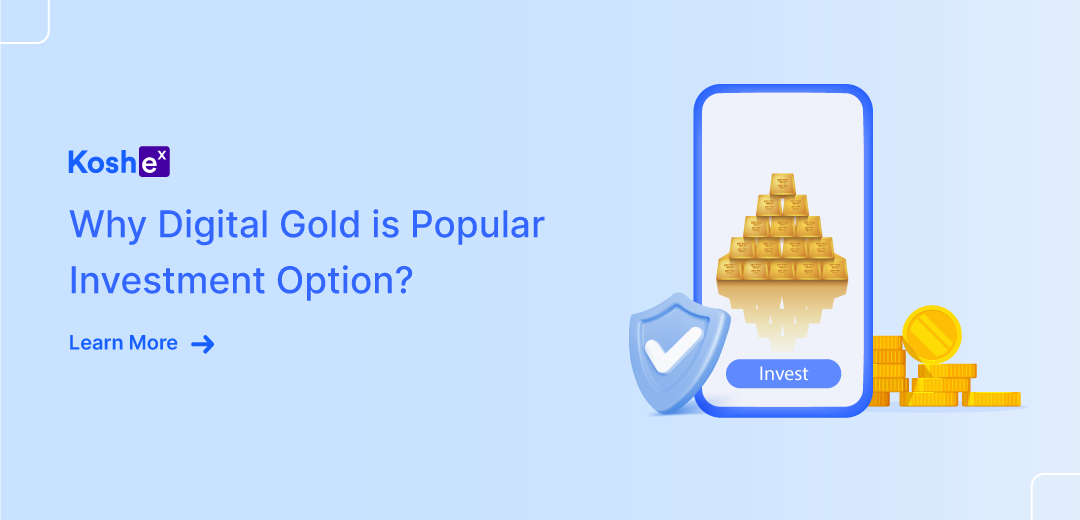Investment decisions can often be complex and overwhelming, as investors face multiple choices. In financial planning, two prominent options often capturing the spotlight are Unit Linked Insurance Plans (ULIPs) and Public Provident Funds (PPFs).
They possess distinct advantages and disadvantages, leaving investors over which option best suits their needs.
In this article, we will explore the details of ULIPs and PPFs, examining their key features and highlighting the factors investors should consider to make an informed decision.
The choice between ULIPs and PPFs depends on various factors, including an investor’s risk tolerance, investment horizon, financial goals, and tax planning requirements. Individuals should evaluate these factors carefully.
Sign up with Koshex today and unlock a world of financial possibilities. Join thousands of investors who trust Koshex’s expertise and personalized guidance. Start maximizing your investment potential and achieve your financial goals with Koshex.
Understanding ULIPs and PPF
ULIPs (Unit Linked Insurance Plans) are hybrid financial products that offer a combination of investment and insurance coverage. They allow policyholders to allocate their premiums into different investment funds, such as equity, debt, or balanced portfolios.
Investors can potentially gain market-linked returns due to the flexibility offered by ULIPs. However, ULIPs carry a certain level of risk as the returns can get directly impacted by the changes in the market. Additionally, ULIPs involve a lock-in period of five years, during which premature withdrawals are not permitted in a financial year.
On the other hand, PPFs (Public Provident Funds) are government-backed savings schemes aimed at promoting long-term savings and financial security. PPF accounts are opened with designated banks or post offices and offer a fixed interest rate. The interest rates are determined by the government every quarter. PPFs allow partial withdrawal during emergencies, like medical or family emergencies.
PPFs are known for their stable and predictable returns, providing investors with security. However, they come with a longer lock-in period when compared to ULIPs, typically extending to 15 years, and premature withdrawals are subject to certain restrictions.
Returns and Growth
ULIPs, being market-linked, have the potential to generate higher returns, especially during periods of favorable market conditions. However, the performance of ULIPs is inherently tied to the volatility in the market, meaning that returns can get impacted negatively during market downturns.
However, PPFs offer comparatively lower but stable returns, as they are not directly linked to market fluctuations. Returns are guaranteed by the government, providing investors with a sense of reliability.
Tax Benefits
Unit Linked Insurance Plans (ULIPs) provide tax deductions on the premiums paid under Section 80C of the Income Tax Act. The premiums paid towards ULIPs are eligible for tax deductions up to Rs.1.5 lakh, which can help individuals reduce their taxable income. This deduction provides a valuable incentive for individuals to invest in ULIPs and save on their tax liabilities.
PPFs also provide significant tax benefits. Contributions made to PPFs are eligible for tax deduction under Section 80C of the Income Tax Act. The amount invested in a PPF account qualifies for a deduction from the individual’s taxable income up to the specified limit of Rs 1,50,000. This deduction reduces the individual’s tax liability, providing a valuable avenue for tax planning and saving.
Flexibility and Liquidity
ULIPs provide investors with flexibility in managing their investments. It means that investors can adjust their investment allocations to optimize their returns. For example, when the equity markets are thriving, investors can allocate a higher proportion of their ULIP towards equity funds.
On the other hand, if the market is volatile, they may opt to switch to debt funds or other more stable options. This flexibility allows investors to adapt their investment strategy according to their risk appetite and market dynamics.
In contrast, PPFs have limited flexibility. Once investors choose to invest in a PPF scheme, they have fewer options for maneuvering their investments. The investment duration for PPFs is generally 15 years, during which the investment remains locked.
While this long-term commitment offers stability, it also means that investors have less flexibility to react to market changes. The interest rates for PPFs are fixed for each financial year, and investors cannot switch between different investment avenues within the PPF scheme itself.
With our user-friendly PPF calculator, your go-to tool for accurate, hassle-free calculations, you can unleash the potential of wise financial planning.
Risk Management and Insurance
ULIPs offer individuals the advantage of wealth accumulation with the added security of life insurance coverage, ensuring a financially stable future for their loved ones.
This feature instills a sense of security and acts as a safety net for policyholders and their families, providing financial protection and peace of mind.
Insurance Coverage
The premiums paid towards the insurance coverage can impact the overall returns on maturity. The insurance component involves administrative and mortality charges deducted from the premium paid. Therefore, it is crucial for investors to carefully assess the costs associated with the insurance component and evaluate its impact on the returns they expect to achieve.
However, PPFs do not include any insurance component. They focus solely on long-term savings and wealth accumulation without providing associated insurance coverage. PPFs are designed as a government-backed savings scheme where individuals can invest their funds and earn a fixed rate of interest. The primary objective of PPFs is to encourage individuals to save for their long-term financial goals, such as education, purchasing a house, or retirement.
Final Takeaways
Investors must evaluate their individual needs and preferences before making a decision. Consider factors such as expected returns, risk appetite, flexibility, liquidity, and the presence of an insurance component. Additionally, tax benefits play a significant role, as both ULIPs and PPFs offer tax advantages that can help optimize tax liabilities and enhance overall returns.
Sign up with Koshex to receive personalized guidance and make the most of your investment potential. Start your journey towards achieving your financial goals with Koshex.
Frequently Asked Questions (FAQs)
Q1. Are ULIPs a suitable investment option for long-term financial planning?
Ans. ULIPs can serve as a suitable investment option for individuals seeking a blend of investment growth and life insurance coverage with long-term financial planning. However, it is important to carefully assess the costs associated with the insurance component and consider the potential risks associated with market fluctuations.
Q2. Can I withdraw funds from my PPF account before the completion of the lock-in period?
Ans. Partial withdrawals from a PPF account are allowed after the completion of the 7th year. However, the maximum withdrawal limit is subject to certain conditions. Premature withdrawals before the completion of the lock-in period are generally not permitted except in cases such as medical emergencies.









Leave a Comment